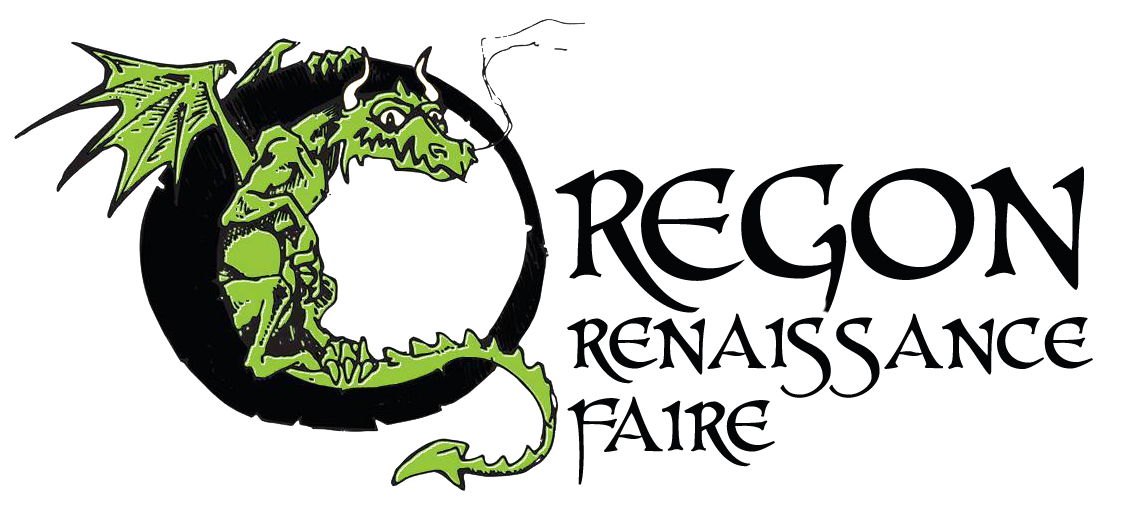Costuming Guidelines
One of the best parts about working Faires is getting to wear fun and interesting costumes. Finding the right look can be tricky, especially if you are just getting started. One of the most important things to remember is that your costume should fit with your job (or character) at Faire. If you are someone who checks ID’s at the pub, a saucy barmaid is a more suitable look than a fairy. If you help pick up trash around the site, you would not want to wear a noble’s attire.
While it is unrealistic to expect 100% historical accuracy, our goal at these shows is to give our guests the most immersive and magical experience possible, without drawing attention to unavoidable modern elements and breaking the illusion.
Guilds have guidelines specific to their group requirements set by the guild leader (and then accepted by the Entertainment Director). Non-guild street/stage performers wear costumes that they submit with their application and then are accepted by the Entertainment Director. Merchants wear costumes appropriate to their booth’s theme/aesthetic submitted with their application and accepted by the Merchant Coordinators. Costumed volunteers (some departments wear staff t-shirts) wear costumes that are appropriate for representing villagers of the Faire.
Please direct any costuming questions not addressed in this guide to your Guild Leader or Department Head first, and if you need additional guidance contact our Costuming Director, Ash Billings, at wraescostumedept@gmail.com. Ash provides regular virtual costuming workshops on our Facebook Cast & Crew pages, live and recorded to watch later. These are beneficial for everyone, from a first-year participant to a lifelong faire-goer.
General Guidelines for Costumed ORF & WMRF Participants:
Costumes should be cohesive, non-modern, and overall aesthetically pleasing to the theme* of the show. For example, it would not make sense to wear a hoop skirt paired with a jester’s hat. It would also not make sense for someone portraying a blacksmith to wear fairy wings.
Examples of typical outfits:
● A full sleeved shirt, a doublet (sleeved or sleeveless), paned slops or breeches, a belt, boots (or socks and
shoes), and some sort of period hat.
● A chemise, bodice, a skirt or two, an apron, shoes, and some sort of period hat.
A cohesive look would be similar to one of the above examples. If you choose to wear costume pieces that are not traditionally worn together, you just need to make sure that your outfit looks intentional and appropriate to your character. Children should be dressed exactly like adults in smaller sizes!
You can choose to wear faded colors or tattered clothes if you are a farmer (don’t forget to rub some dirt on yourself!) or cleaner, newer-looking clothes if you are a skilled craftsman who would have had nicer things. Your accessories should convey the same message and tell the story of your character.
Accessories like a tankard or bottle, a pouch, and tools of your trade are where the detailing really sets your
character apart from others.
*The theme is for the show as a whole, NOT the individual-themed weekends intended for the patrons (fairy weekend, time travelers weekend, etc.). You can adjust your costume slightly for the changing themed weekends, as long as it remains period-appropriate and fits your character/position.
Hair, Piercings, and Tattoos:
There are a variety of hairstyles that were worn in the 16th century, but as with the rest of your costuming, it should make sense for your character/position. If you have a modern color or cut to your hair, you can achieve a more period look by having your hair covered, braided, etc.
If you have piercings or tattoos that you are unable to remove/cover during show hours, make a reasonable attempt to downplay the modern aspects.
What To Avoid:
● Modern things and anachronistic items (uncovered camping chairs, modern printed signs and/or fabrics,
items with brands displayed, electronics, etc.)
● Undercut or underbust bodices without appropriate supportive undergarments
● Sneakers, flip flops, or modern-looking footwear. SHOES MUST BE WORN, NO BARE FEET.
Sunglasses, cell phones, modern watches, fit bits, earphones, and other modern accessories should be covered while participating in the Faire. Be discreet when using your cell phone or camera to take photos.
Examples of exceptions: Radios and earpieces for those on staff, medical devices, health code and fire safety requirements, etc.
Appropriate Color and Material Choices for Participants:
Colors:
Rust: Iron, earth
Red: Berry, beet, apple
Pink: Rose, dusty
Yellow: Daffodil, marigold, onion, wheat
Orange: Carrot, pumpkin, squash, peach
Green: Forest, hunter, evergreen, moss, pea, apple
Blue: Blueberry, heather, cornflower
Brown: Bark, earth, cocoa, walnut
Grey: Charcoal, dove
Avoid
Neon
Fluorescent
Tye-dye
Camouflage
Fishnet
Denim
Shiny polyester
Taffeta
Printed fabrics
Artificial looking colors
Obvious modern clothing (t-shirts, jeans, baseball hats, etc.)
Shopping with Faire Merchants
Keep in mind that not everything sold by a merchant at our faire is appropriate for your character. The guidelines still apply, even if you purchase an item on-site.
Making it yourself
If you have decided to make your costume yourself, do your research! There are websites that can help you step-by-step from beginning to end. It is also recommended that you pair up with someone when sewing a costume, that way you can help one another fit the clothes properly.
http://www.elizabethancostume.net/
A great site for research, ideas, pictures, patterns, costume construction, and merchants.
Additional resources:
http://www.renaissancetailor.com/demos_main.htm
https://margospatterns.com/
Have fun and be creative!
WRAES and the events we produce embrace, support, and celebrate differences in age, ethnicity, gender, gender identity or expression, language differences, nationality or national origin, family or marital status, physical, mental, and development abilities, race, religion or belief, sexual orientation, skin color, social or economic class, education, military service, caste, and other characteristics that make our guests and participants unique.
